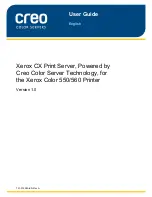
Design Criteria
28
fragments which are stored on 6 different nodes, and the object can be decoded and read so long as any 4 of
those 6 fragments are available.
Erasure coding requires less storage overhead (the amount of storage required for data redundancy) and results
in somewhat longer request latency than replication. Erasure coding is best suited to large objects over a low
latency network.
Regardless of whether you use replication or erasure coding, if your Cloudian HyperStore system spans multiple
datacenters, for each storage policy you can also choose how data is allocated across your datacenters — for
example, you could have a storage policy that for each S3 object, store 3 replicas of the object in each of your
datacenters; and a second storage policy that erasure codes objects and stores them in just one particular
datacenter.
Supported Erasure Coding Configurations
Cloudian HyperStore supports EC, replicated EC, and distributed EC configurations.
EC
This configuration requires a minimum 6 nodes across a single Data Centers (DC). This supports the
minimum data and parity fragments of (4+2) where 2 is the parity. Table 3 lists the default EC configuration
and the default number of nodes for a single DC.
Cloudian also supports 5 nodes EC as a custom policy – EC3+2.
Default EC Configuration and Default Number of Nodes
Nodes in the DC
EC
6
4+2
8
6+2
10
8+2
Summary of Contents for UCS S3260 M5
Page 25: ...Solution Design 25 ...








































